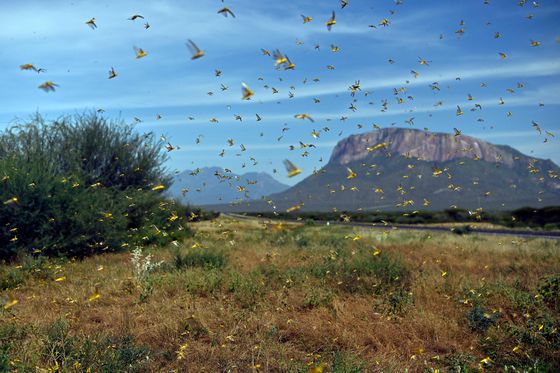Recently, the UK contributed £17 million to support the Food and Agriculture Organization of the United Nations (FAO) to continue their efforts to combat the desert locust surge in East Africa and improve early warning and forecasting systems.
Because of contributions like this and other contributions that have been made by countries including Germany, Saudi Arabia, the United States of America and other funders such as the African Development Bank, The Bill and Melinda Gates Foundation, substantial gains have been made in containing the desert locust.
Given that desert locust outbreaks and other insect-related invasions are to be expected in the future, in part because of climate change, there is need for countries affected to use the funds to work with organizations such as FAO and other stakeholders that are in the frontlines in addressing insect-related challenges such as the International Center of Insect Physiology and Ecology and the Entomological Society of America.
They must craft both short-term and long-term approaches to manage insect pests that affect food crops, causing significant crop losses to farmers while threatening food security and agriculture.
Over and over, in dealing with insect-related challenges, it is clear that many African countries continue to take a reactive rather than a proactive approach and that needs to change. For example, in dealing with the fall armyworm, an invasive pest that appeared in Africa in 2016 and spread rapidly, causing losses worth millions of dollars, several countries including Malawi, Kenya, Ghana, and Nigeria rolled out measures to contain the pest only after it had spread.
Instead, strategically, it would benefit countries if they would use available resources and tools such as satellite data, big data, intelligence generated by predictive modelling and other tools such as the Horizon Scanning Tool, to anticipate and prepare for insect and pest-related challenges.
FAO continues to rely on data to produce forecasts and early warning alerts for the desert locust and other invasive pests such as the fall armyworm. Time is ripe to use intelligence derived from data and predictive modelling to anticipate future insect outbreaks. Doing so will allow African countries to stay ahead.
Accompanying data-based intelligence is the need for African countries to strengthen in-country pest surveillance programs. Agriculture is a source of livelihood for over 70 percent of Africa’s population.
As such, countries must safeguard agriculture by having national pest surveillance programs that are tasked with carrying out routine pest surveys and identifying and detecting new insect pests including those deemed to be invasive.
It is key for national governments to have functional agricultural pest detection systems. The good news is that there are many guiding documents that countries can tap into as they formulate their pest surveillance programs, such as the guidelines provided by the International Plant Protection Convention.
Importantly, countries must also invest in ways to share information about detected insects and the appropriate sustainable solutions to manage them. The use of mobile phones and radio is one approach that can be utilized to widely disseminate information about impending insect pest outbreaks.
Moreover, keeping citizens and other stakeholders that are keen on tackling insect pest challenges can also benefit from organized meetings, workshops, and conferences.
Finally, there is a need to invest in long term actions, including investing in research and the training and capacity building, to ensure that African countries have the expertise and capacity to combat insect pests, now and into the future.
Insect-pest related challenges will continue to challenge African agriculture. African countries must use the available tools to anticipate, prepare, and stay ahead of the next pest-related challenge.
Ensuring food security for all, especially in Africa, will depend on how we harness data and available intelligence to stay ahead of insect pests including staying ahead of the next desert locust outbreak.
Source: Inter Press service
